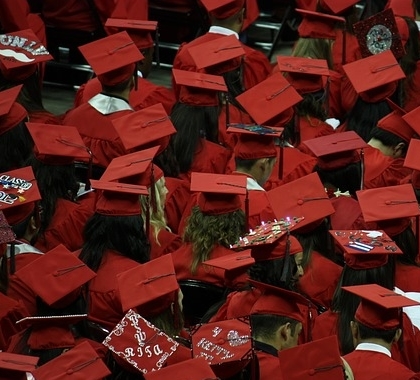“Making Citizens: How American Universities Teach Civics,” published by the National Association of Scholars (NAS) in January, is a 523-page volume written by NAS Director of Communications David Randall detailing the history and current state of “new civics,” which appears under labels such as “civic learning,” “democratic engagement,” and others that imply political action.
Emphasis on ‘Service Learning’
The heart of what NAS calls “new civics” is “service learning.” Although the term suggests voluntary involvement of students in community activities to help others, it is much more than that, Randall writes. Not only does service learning merge education and activism, but from its start in the 1960s, its goal has been to permeate the academy with the radical political goals of the left.
Randall quotes early leaders of the movement such as Nadinne Cruz at Stanford University, who said, “I see the academy as an organizing base from which to do social change work.”
With its innocuous name and emphasis on volunteerism, service learning has quietly expanded throughout academia. At the University of Northern Colorado, NAS counted at least 100 service-learning courses—about 10 percent of all courses offered.
A typical service-learning course at Metropolitan State University in Denver is called “Social Justice: Self and Citizenship.” It requires 30 hours of “volunteer work in a setting for the underserved” and directs students to: “a) reflect on social oppressions; b) analyze the political systems that surround their communities and institutions; and c) apply their reflections to their career goals and personal development.”
Alinsky, Marxist Tactics
Although service learning is the broad vehicle for new civics, the effort has been shaped by other forces as well, writes Randall. One of these is a movement called “public achievement,” which teaches K–12 students and college undergraduates the political action techniques outlined by left-wing community organizer Saul Alinsky. Another is the “new civic pedagogy,” patterned after the “critical pedagogy” of the Brazilian Marxist and liberation theologist Paulo Freire. It teaches students to attack power structures they consider oppressive.
Faculty members teach service-learning courses, but the impetus for the new civics takeover comes from a combination of administrators, activist organizations, and government agencies, Randall reports. The pivotal moment was the publication of a report by the Association of American Colleges and Universities (AACU) in 2012. The AACU, composed of 1,400 postsecondary institutions, calls itself a “force for liberal education,” but the organization embodies much of the current emphasis on civic engagement. Its literature is sprinkled with phrases like “life, work, civic engagement, and global challenges,” “civic learning, ethical reasoning, and engagement with US and global diversity,” and “reinventing undergraduate education for today’s world.”
Federal Government Financed
The association’s 2012 report, “A Crucible Moment,” was authorized and heavily financed by the U.S. Department of Education. It minimized traditional civics and proposed new approaches.
“Americans need to understand how their political system works and how to influence it, certainly, but they also need to understand the cultural and global contexts in which democracy is both deeply valued and deeply contested,” the report said. “Moreover, full civic literacies cannot be garnered only by studying books; democratic knowledge and capabilities also are honed through hands-on, face-to-face, active engagement.”
Soon after “A Crucible Moment” appeared, the Obama administration issued a regulation based on a recommendation from the report, requiring colleges to use 7 percent of their federal work-study funds to provide “community service jobs” for students.
“The machinery of the federal government now works to forward the New Civics, regulation by regulation and grant application by grant application,” wrote Randall.
‘Intellectual Chicanery’
Jay Schalin, director of policy analysis at the Martin Center for Academic Renewal, says the left has sneakily infiltrated academia with its agenda.
“One of the worst deceptions the left has gotten away with in recent years is to surreptitiously redefine our American democracy,” Schalin said. “Often, I am amazed to find myself agreeing with articles written by academics whose ideas I have previously found abhorrent, and then I remember that they are discussing a radical form of democracy conceived by leftists such as John Dewey, Paulo Freire, and the Frankfurt School rather than the form conceived by James Madison, Thomas Jefferson, and John Adams.
“This deception is taking over the academy, and the NAS report is a good start on calling out those responsible for this intellectual chicanery,” Schalin said.
Student Life Factor
George Ehrhardt, an associate professor in the Department of Government and Justice Studies at Appalachian State University, says the NAS report may be putting blame in the wrong quarters.
“Most of the indoctrination stories that hit the news are from student life, not faculty, and I think the case with service-learning is similar,” Ehrhardt said. “To me, it seems like the student-life folks—even more than academics—are marinated in the closed bubble of social thought in academia.”
Jane S. Shaw ([email protected]) is School Reform News’ higher education editor.
INTERNET INFO:
David Randall, “Making Citizens: How American Universities Teach Civics,” National Association of Scholars, January 2017: https://heartland.org/publications-resources/publications/making-citizens-how-american-universities-teach-civics




